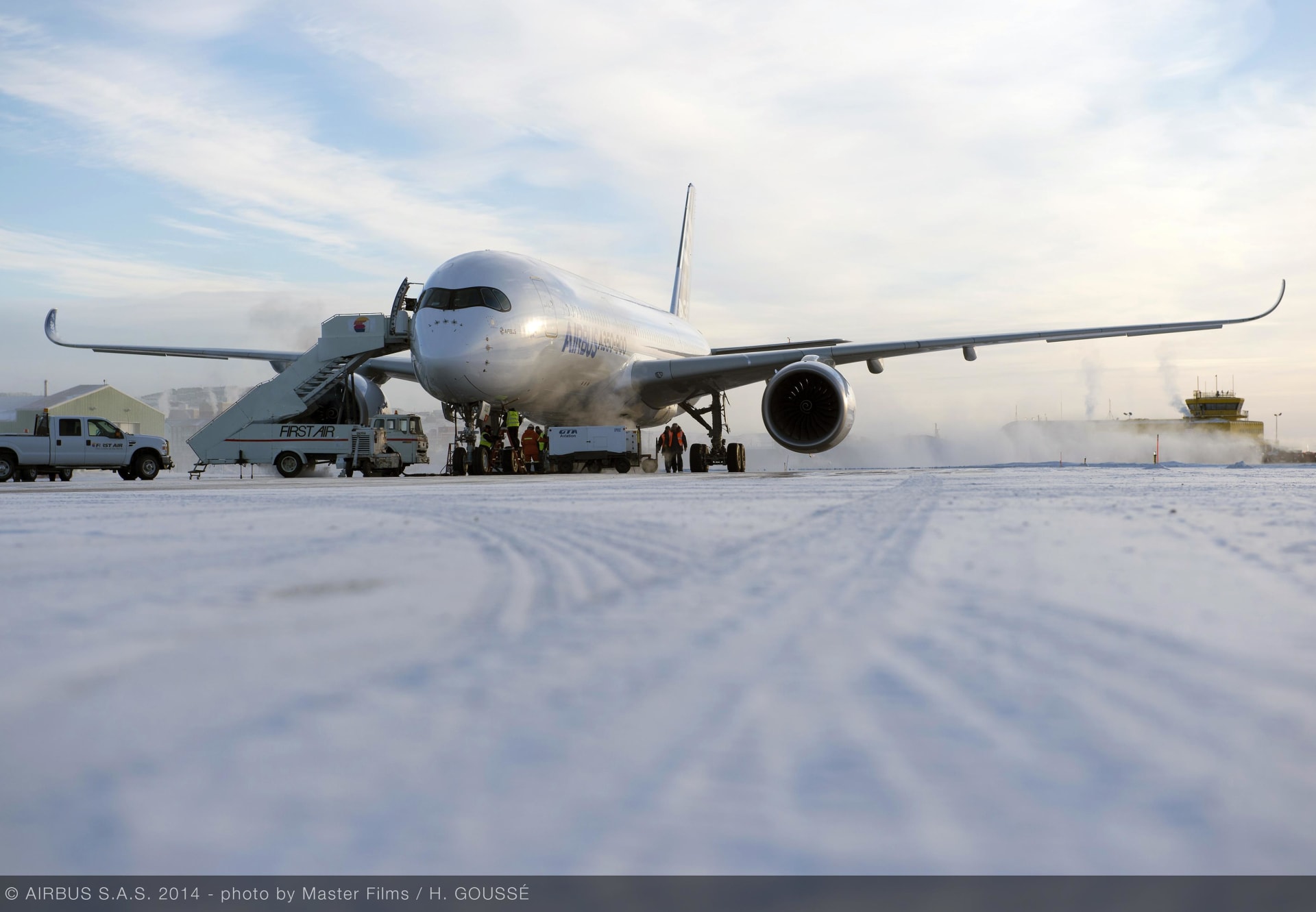دبي، الإمارات العربية المتحدة (CNN) -- مع درجات الحرارة شديدة البرودة التي تجتاح غالبية أنحاء الولايات المتحدة، قد يتساءل المسافرون كيف تكون طائراتهم آمنة للطيران.
وتكمن الإجابة باختصار أنه إلى جانب التذويب المنتظم للطائرات قبل الإقلاع، تُخضع شركات الطيران طائراتها لاختبارات صارمة في أبرد الأماكن على الكوكب، قبل أن تُدخل نطاق الخدمة.
وتابعت CNN في السابق، فريقًا من المهندسين والميكانيكيين وطياري الاختبار لدى شركة "Airbus". وكانت مهمتهم معرفة كيف صمدت طائرتهم التجريبية "A350 XWB" طويلة المدى، في البرد القارس.
وترك فريق "إيرباص" دفء وراحة قاعدتهم في مدينة تولوز الفرنسية، لإجراء تجارب مختلفة خلال أجواء الطقس القاسية على متن طائرة الاختبار في مدينة إيكالويت المتجمدة، عاصمة إقليم نونافوت في القطب الشمالي الشرقي لكندا.
وتضمنت الاختبارات الأرضية والجوية تشغيل "A350 XWB" في درجات حرارة تصل إلى -18 فهرنهايت (-28 درجة مئوية)، واختبارات عكس الاتجاه مع الثلج، واختبارات طيران محلية.
من أقصى البرودة إلى الحرارة القصوى
ويجب اختبار جميع أنواع الطائرات الجديدة في ظروف بيئية قاسية، تتراوح بين التجمد والحرارة الشديدة.
وقال بيدرو دياس رئيس عمليات الطيران لدى "إيرباص" للصحفيين المحليين: "الوصول إلى المكان الأبعد يعني أنه في وسعنا تخطي كل شيء".
ويؤثر البرد القارس على أجزاء مختلفة من الطائرة بطرق مختلفة. وتتعاقد المعادن، مثل الفولاذ والألمنيوم، بمعدلات مختلفة. وقد تفقد مواد التشحيم اللزوجة التي تتمتع بها، ما يتسبّب بحدوث احتكاك وتآكل للأجزاء المتحرّكة. وفي الوقت عينه، يمكن أن تصبح الأجزاء البلاستيكية والمطاطية هشة.
وجاءت اختبارات الطقس البارد في كندا بعد أيام فقط من انتهاء طائرة "MSN3" من اختبار الارتفاعات العالية في بوليفيا. وكانت قطر المحطة التالية لاختبار الطقس الحار.
"موقع ممتاز لاختبار الطقس البارد"
ولعدة سنوات، قامت إيكالويت، الواقعة في جزيرة بافين، بتسويق نفسها على أنها "موقع اختبار ممتاز للطقس البارد".
واختبرت "إيرباص" طائراتها هناك منذ تسعينيات القرن الماضي، بينما استضاف المطار أيضًا صانعي طائرات مدنية وعسكرية أخرى مثل "بوينغ"، و"داسو"، و"يوروكوبتر"، لإجراء تجارب مماثلة.
لكن مواقع اختبار الطقس البارد تتواجد أيضًا في أماكن غير محتملة.
وفي أبريل/ نيسان 2010، اختارت "بوينغ" مختبر "McKinley Climatic Laboratory" في فلوريدا، كموقع لاختبار الطقس القاسي على طائرة "787 Dreamliner".
وفي غرفة الاختبار، تعرضت الطائرة لدرجات حرارة منخفضة تصل إلى -45 درجة فهرنهايت (-42.7 درجة مئوية) لساعات.
وفي وقت لاحق، كان عليها تحمّل درجات حرارة تصل إلى 115 درجة فهرنهايت (46 درجة مئوية)، لعدة ساعات أيضًا.
وأفاد راندي تينسيث، نائب رئيس التسويق لدى شركة "بوينغ" للطائرات التجارية في بيان صحفي أن "هذه الاختبارات تساعدنا على إثبات أن عملائنا سيحصلون على طائرات تعمل من أجلهم في جميع المناخات التي يتوجهون إليها وفي جميع أنحاء العالم، وفي جميع الفصول".
ولكن، تتأثر تجارب الطقس القاسي أيضًا بعدم القدرة على التنبؤ بالطبيعة الأم.
وتم تحديد موعد اختبارات "إيرباص" في إيكالويت مبدئيًا لمدة خمسة أيام، ليس بسبب عاصفة ثلجية وشيكة خلال الشتاء، لكن بسبب درجة حرارة معتدلة تصل إلى -18 درجة مئوية، وهي دافئة جدًا لاختبارات الطقس البارد.
